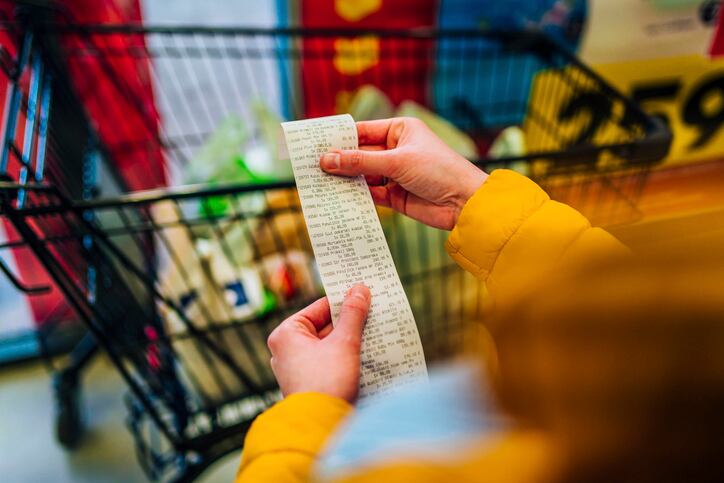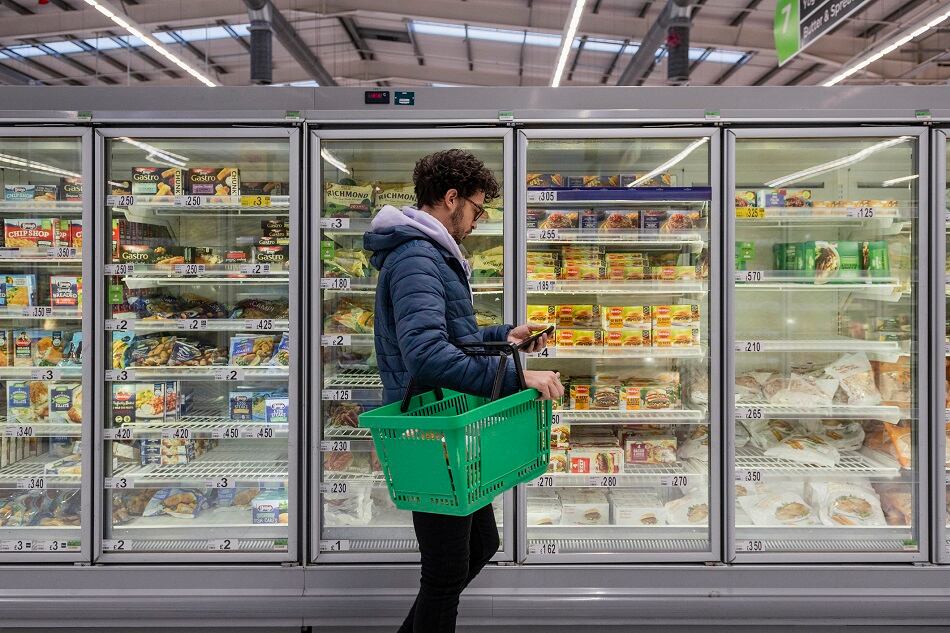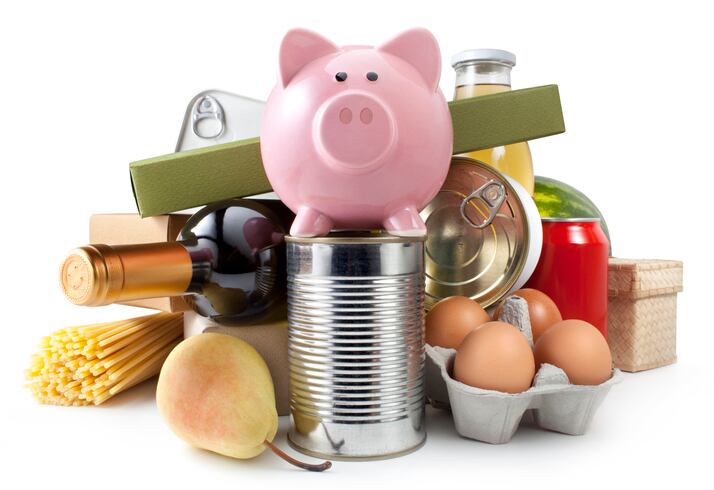For the seventeenth consecutive month, the food index increased – rising 0.9% in April over March. This drove up prices for all food 9.4% for the past 12 months – marking the largest annual increase since April 1981, according to the consumer price index, which tracks how much Americans pay for goods.
The price for food consumed at home in April was even higher with a month-over-month increase of 1%, which was lower than the 1.5% increase reported in March, but still pushed up prices for the full year a staggering 10.8%, BLS reported, noting this is the highest 12-month increase since the period ending November 1980.
April’s increase was driven by a 2.5% increase in dairy and related products, which is the highest monthly increase since July 2007, as well as a 2% jump in prices for nonalcoholic beverages, a 1.4% increase in combined prices for meats, poultry, fish and eggs and a hard-hitting 10.3% increase in eggs alone, which likely reflects the impact of avian flu on already strained supply chains.
[Editor’s note: Find out how innovation can help dairy products defend against rising prices at our upcoming free online webinar Dairy Trends: From zero-sugar to ‘animal free.’ Register for the event HERE.]
Meat, poultry, fish, eggs
For the year, the price of food consumed at home likely is felt most strikingly in meats, poultry, fish and eggs, which rose 14.3% over the last year, according to BLS.
The price for food consumed away from home, including at restaurants, also rose in April, but it was not as sharp as what was seen at store shelves. The index for food away from home rose 7.2% over the last year and 0.6% in April after rising 0.3% in March.
While food prices continued to climb, relief in other areas helped slow the overall rise for the consumer price index for all urban consumers, which inched up only 0.3% in April on a seasonally adjusted basis compared to a 1.2% jump the prior month. Breaking the sharp upward trajectory that began in January, the month-over-month increase in April was the lowest it has been since last August.
The slowdown reflects a 2.7% drop in the energy index in April after rising 11% in March, including a decline of 6.1% in the gasoline index in April. Natural gas was still up 3.1% and the index for electricity was up 0.7% month-over-month.
Other indexes that fell in April over the prior month include used cars and trucks and apparel. Still, other significant month-over-month increases that impacted the food industry include a 3.1% jump in transportation services, a 3.1% increase in utility gas service and a 2.7% increase in overall energy services, according to the April report.
Consumer concern about prices rises, prompting shopping shifts
With supply chain issues, harvest disruptions related to poor weather and geopolitical events, and labor challenges unlikely to ease in coming months, despite industry efforts, consumers and grocers are unlikely to find much relief in the numbers, Spencer Baird, interim CEO at Inmar Intelligence, told FoodNavigator-USA.
So far, retailers and manufacturers have been able to pass on to consumers a notable portion of the inflation through multiple price increases in the past year with little impact on volume sales.
However, that could be about to change as consumers who are also feeling the squeeze at the gas pump and for other essentials begin to look for ways to pull back their spending, several companies and retailers warned during this month’s quarterly earnings calls.
Indeed, Baird said nearly all (96%) of shoppers are at least “somewhat concerned” about inflation, and an “astounding” 58% are “very concerned,” based on data gathered by Inmar Intelligence’s network of more than 23 million households.
“Considering the overwhelming majority has worries about rising prices, it’s not a surprise that consumers are, in fact, shifting their food and beverage purchases,” he said, noting that more than half (54%) of consumers reported switching to store-brand products on their most recent grocery trip, according to the latest Inmar Intelligence data.
“Further,” he said, “more than one-third (39%) of consumers have either reduced the number of items they purchased per trip or reduced the number of shopping trips altogether.”
Time for a change: ‘Coming to the rescue for consumers’ pockets now will be a key driver of brand loyalty in the future’
Given these shifts and inflation climbing to 40-year highs, Baird argues it is “imperative that food and beverage retailers and manufacturers consider pivoting to meet consumer needs. There is great value in offering coupons, promotions and other cost-savings measures for shoppers right now.”
Many players have been hesitant to leverage traditional promotional techniques as they continue to struggle with producing sufficient supply to meet demand, preferring instead to leverage pack-price architecture that creates different levels of entry and value for shoppers.
While that strategy may have worked so far, it might be time for a change, he said.
“Coming to the rescue for consumers’ pockets now will be a key driver of brand loyalty in the future. Consumers will remember which brands helped lessen the burden of inflation this time around, and they’ll stay loyal to those that made life less stressful and less expensive,” Baird said, citing Inmar data from April 2022 that revealed more than 75% of consumers rated discounts and coupons as ‘moderately important’ or ‘very important.’
Likewise, he noted, “consumers are also rewarding retailers that don’t pass on the full weight of inflation both in terms of frequency and basket size, creating a massive opportunity for retailers to foster long-term brand loyalty by standing by consumers and keeping prices as low as possible in the turbulent times.”
This is reflected in insights and earnings shared by retailers in the past month, including Albertsons, which has held back from passing the full brunt of inflation on to consumers even though it has squeezed margins. The retailer reported last month that same store sales grew 7.5% in the quarter ended Feb. 26 compared with a year earlier, beating FactSet expectations of 4.3%.
Sprouts Farmers Market, on the other hand, has opted to pass price along to consumers as part of a broader strategy to court shoppers with value-added items and an enjoyable shopping experience, rather than go after price-sensitive consumers who it argues are less loyal.
While it reported net sales gains of 4% in the most recent quarter ending April 3, the gains were driven primarily by new store openings as it saw only a 1.6% increase in comparable-store sales, much to the alarm of some investment analysts.




